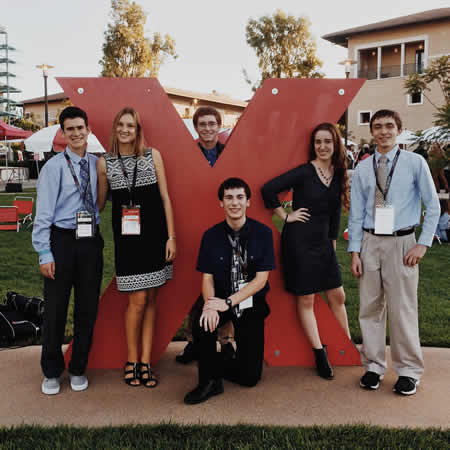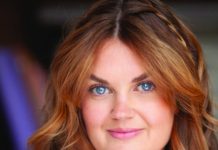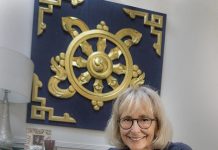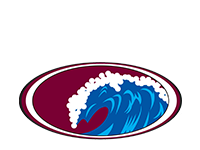By Rita Robinson | LB Indy
With a lot of help from each other and votes from friends on social media, five Laguna Beach High School students are fast-tracking accomplishments in their senior year with two prestigious awards this month. The team of science students won more than $10,000 to invent a low-cost solar water-purification system for underdeveloped countries.

Of the prize money, $1,500 was awarded by the TEDx Orange Coast teen science competition at Soka University in Aliso Viejo. The LBHS team competed with six other finalists. The rest of the prize money, a $10,000 grant, was also awarded to the team by the Lemelson Foundation through MIT’s Engineering School, which supports young inventors’ projects that foster economic growth in developing countries.
Now the big decision on the seniors’ minds is choosing between two once-in-a-lifetime events, going to grad night on June 18 or flying the next day to the annual EurekaFest at MIT in Boston to showcase their project.
“That’s a toughie between what will obviously be amazing experiences,” said Andrew Couse, dubbed the team’s numbers man and lead chemist. Five of the team’s members have already applied to high-ranking colleges across the country, with MIT at the top of some of their lists.
The students met as juniors in an after-school science lab organized by science teacher Steve Sogo, whose son, Jeremy, is the sixth member and a junior at Laguna Hills High School. At Sogo’s invitation, they got together over the summer and started creating plans for a low-cost water-purifying system that uses sunlight and hydrogen peroxide.
Sogo and the team gathered one night a week at a local coffee shop, drinking Frappuccino and eating scones while crunching out the details that ended up in an award-winning 10-page proposal. During the day, some worked as interns at UC Irvine in specialized chemistry labs and brain-cancer research, while others went to music and science camps or worked at a local surf shop.
“Each person was responsible for a particular part of the document,” said Sogo. “It was intelligent, well-written, an impressive proposal.” Using the award money, the team will now build the water-purification system in Sogo’s advanced chemical research class.
“That’s a big undertaking,” added Sogo, an award-winner himself for excellence in teaching science. “We’ll actually have something to take to MIT and the EurekaFest this June.” Sogo’s depending on juniors to fill out the team and airplane seats not taken by grad-night-celebrating seniors.
The clean water system is inexpensive to make and will last indefinitely, explained four of the six team members in their classroom last week.
“It was our chance to take our skills and apply them to the real world to help someone else,” said Nolan Gunsolley, designated as the team’s engineering expert. “It’s not just a concept,” Andrew added.
The prototype invention will purify water that runs from seasonal rivers in Maasai Mara, Kenya, where animals defecate and local residents wash themselves and their clothes, said Charlotte Andrews, the team’s front person.
The award money, the team concurred, will give them enough leeway to refine their invention, which should cost under $200 to make, according to Andrew’s estimates. The rest of the money will be used to get the team to Kenya and install the system.
The system uses hydrogen peroxide, inexpensively created by a low-cost photocatalyst and ethanol-water mixture. When combined with sunlight via a parabolic reflector, the hydrogen peroxide destroys microbial life in the contaminated water; nine hours of sunlight can sterilize 40 liters a day, the team’s grant proposal says. Team member Aviva Meyers, who interned at UCI in the electro-chemistry lab, compiled the report, becoming the team’s grant writer. The project combines her interest in science with her humanitarian desires.
The team designed the water-disinfection system to provide clean water for children at Oloolaimutia Elementary School. The system will run sterilized water to a holding tank at the school, explained Charlotte, who learned about the school through contacts at Model United Nations, a student organization replicating the structure of the UN. Cholera, typhoid and dysentery are prevalent in Kenyan schoolchildren due to the lack of clean water, the report says.
Out of the six finalists in the Orange Coast TEDx competition, the LBHS team won the $1,500 prize for their project by receiving the most votes online. They had a day to explain their project to passersby at Soka and 60 seconds the next day to explain it to an audience of an 2,000 adults, explained Charlotte, who can readily repeat the performance.
More than 1,000 social media “friends” were invited to vote on a special “We Need Your Vote! Clean Water for Kenya” Facebook page. “It came down to a popularity contest,” said Charlotte, who also plays on the school’s varsity volleyball team. The coolest part, the team agreed, was when a man from Kenya voted for the project.
The Lemelson-MIT grant is based on STEM, academic standards that encourage hands-on projects in science, technology, engineering and mathematics. The TEDx award focused on STEAM academic standards, which also includes the arts. The idea behind both programs is to encourage students to collaborate and create solutions for real-world challenges.





[…] wrote about a student science team she was part of that designed and developed a river water purification system for a school in […]
[…] leads a full-year class in which seniors pursue original research projects in […]